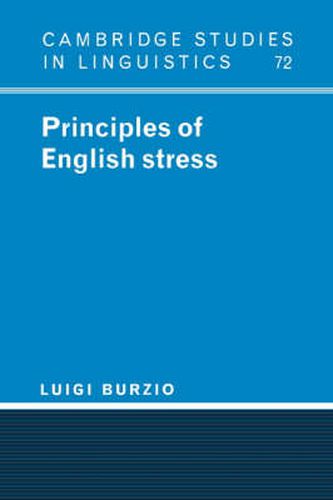Readings Newsletter
Become a Readings Member to make your shopping experience even easier.
Sign in or sign up for free!
You’re not far away from qualifying for FREE standard shipping within Australia
You’ve qualified for FREE standard shipping within Australia
The cart is loading…






In this provocative work, Luigi Burzio argues that many common assumptions within stress theory, and phonological theory more generally, are in fact rather arbitrary. He proposes radical departures from recent tradition. In Part I he analyzes stress in the underived English lexicon, arguing that the basic accentual groups or feet are not monosyllabic or bisyllabic, as often assumed, but rather bisyllabic or trisyllabic. This analysis brings significant simplifications to other recent theorizing, including the elimination of standard extrametrically and all rules destressing. In Part II Professor Burzio deals with morphologically complex words, and argues that various phenomena of stress presevation, including the apparent stress neutrality of a class of affixes, are all predictable reflexes of a single principle of Metrical Consistency. In addition to a superior account of stress, the proposed metrical theory yields a unitary account of a wide spectrum of vowel-length alternations, in an overall conception of phonology which is modular, like that of comtemporary syntax. The book makes a major theoretical contribution to the analysis of English word stress and to phonological theory.
$9.00 standard shipping within Australia
FREE standard shipping within Australia for orders over $100.00
Express & International shipping calculated at checkout
In this provocative work, Luigi Burzio argues that many common assumptions within stress theory, and phonological theory more generally, are in fact rather arbitrary. He proposes radical departures from recent tradition. In Part I he analyzes stress in the underived English lexicon, arguing that the basic accentual groups or feet are not monosyllabic or bisyllabic, as often assumed, but rather bisyllabic or trisyllabic. This analysis brings significant simplifications to other recent theorizing, including the elimination of standard extrametrically and all rules destressing. In Part II Professor Burzio deals with morphologically complex words, and argues that various phenomena of stress presevation, including the apparent stress neutrality of a class of affixes, are all predictable reflexes of a single principle of Metrical Consistency. In addition to a superior account of stress, the proposed metrical theory yields a unitary account of a wide spectrum of vowel-length alternations, in an overall conception of phonology which is modular, like that of comtemporary syntax. The book makes a major theoretical contribution to the analysis of English word stress and to phonological theory.